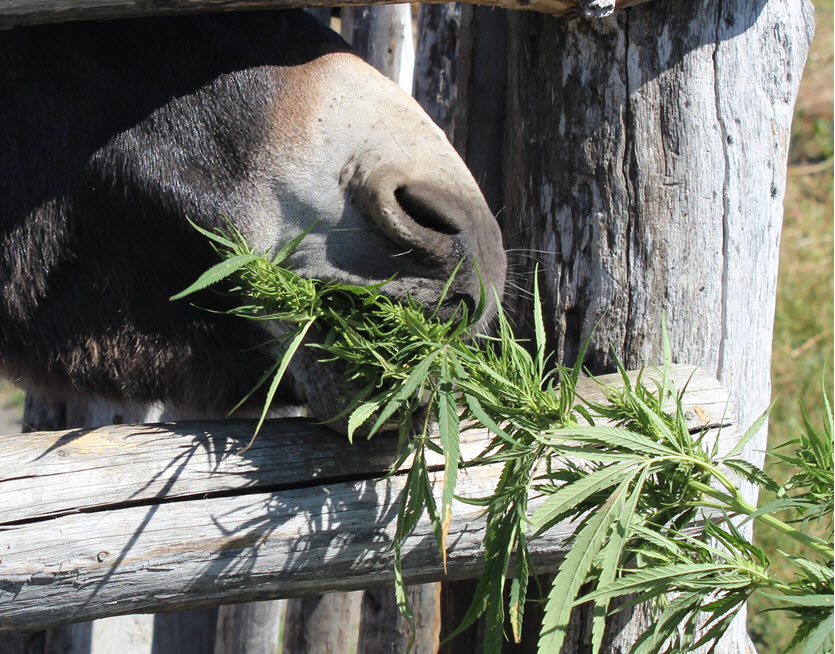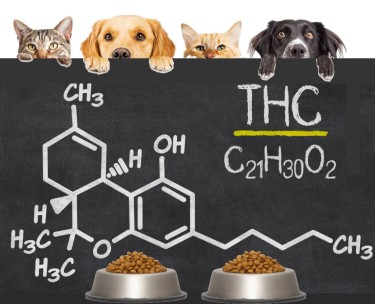
Should hemp CBD biomass be used as feed for farm animals?
Hemp farmers, along with researchers from Oregon State University (OSU), are exploring the possibility of using CBD by-products to make feed for farm animals.
The hemp industry in Oregon relies on the sale of cannabidiol (CBD) and smokable flower. Once these two have been extracted or harvested from the farm, the rest of the plant material left behind has little or no value.
Since the Farm Bill was passed in 2018, the industry has discovered many uses for hemp plants, and in the three years that the law went into effect, the U.S. hemp market has generated millions of dollars in revenue from this sector.
Hemp plants are valued primarily for their CBD-rich composition. They also serve as raw materials for making industrial products such as paper, plastics, clothing, shoes, textiles, ropes, biofuels, insulation materials, and even food.
The plant is versatile!
A few days ago, OSU researchers came together to discuss the potential benefits of making animal feed from CBD by-products. Instead of allowing large amounts of hemp by-products to be destroyed, animals such as cows, sheep, goats, chickens, and pigs can be fed. Research on this topic has been skewed for some time. Dr. Serkan Ates, Professor at the Department of Animal and Pasture Sciences, showed in the discussion that there is great potential here.
Dr. Ates recently completed a two-year research experiment in which varying amounts of hemp by-products were incorporated into the feed of farm animals. The aim of the experiment was to determine what effects the different amounts of by-products have on the health of the animals and whether they influence the behavior of the animals. The team also monitored the length of time it takes for the animals’ digestive systems to break down the tiny amounts of psychoactive compounds (THC) in the plant.
If this potential turns out to be true, livestock farmers can reduce their feed costs on the farm, as hemp by-products are much cheaper than other feeds.
Researchers examined the events that followed after an animal consumed hemp by-products to determine its potential as a useful crop.
Hemp biomass could be a high quality animal feed. It has similar compositions to alfalfa. In fact, some hemp biomass has a higher protein and fat design than other commonly used feeds.
In the feeding experiment, the researchers replaced alfalfa with hemp in varying amounts and durations.
The sheep were fed 10-20% hemp for four to eight weeks. A control group fed only alfalfa was retained. After eight weeks, the initial results showed that the animals put on the hemp diet did exceptionally well. There was a noticeable gain in weight and improved health values.
For lambs, around 10% hemp biomass can be added to the diet. The researchers reported that no adverse effects on animal performance were observed, but that feed consumption increased significantly.
The dairy cows in this study were fed 15% hemp biomass used for four weeks. Although the cows showed signs of increased milk yield, it was observed that the cows’ appetite decreased during and after this time. The milk also had a lower fat composition.
Before a specific decision can be made, it takes in-depth research to confirm the current hypothesis.
A step-by-step analysis of each diet, as well as a comprehensive breakdown of the observations, is essential to arrive at a conclusion on whether or not depleted hemp biomass is a lower cost feed for pet owners.
Dr. Ates said the most critical aspect of the research is to find out if hemp biomass can be substituted for alfalfa or any of the other traditional feeds. If this is possible, the total feed cost can be reduced to some extent. In the next year, the researchers plan to conduct a feeding trial with used hemp biomass on poultry.
The proposed hemp by-products, also called hemp biomass, which are intended for use in making animal feed, are not the most valuable part of the plant. Because of this, hundreds of hemp farmers don’t mind throwing the bulk of it away. With the recent development, players in the country’s go industry are beginning to hope that producing a final feed using the biomass would be a more effective way to dispose of the mass in the long term. It would also create a new market that guarantees more profit.
Over the past two years, following the passage of medical and recreational cannabis laws at various stages across the country, the HP industry has seen a sharp decline in demand. The market is oversupplied with hemp, which greatly reduces the farmers’ costs and profits.
This miserable situation can also be traced back to the boom that followed the post-farm bill boom in 2019. During that time, hundreds of cannabis business owners jumped into the market without proper investigation. This caused the supply chain to become porous and customer demand to decline every month.
According to reports, of 64,000 acres approved for hemp cultivation in 2019, only 7,000 acres of farmland are licensed for the same purpose by the Oregon Department of Agriculture. In 2020 it was around 27,500 hectares. According to these statistics, many farmers have given up the dream of the green rush.
Many cattle ranches are located in Oregon, and if that works, many of these animals can be fed hemp biomass. The best way to recycle the hemp industry is to create a new path for the plant’s unused materials. In this way, more value is attached to the plant. Jacob Crabtree, CEO of Columbia Hemp Trading Company, also agreed that this would effectively create a sustainable marketplace for hemp plants and their by-products.
The hemp industry could see another green rush if it is confirmed that hemp is beneficial for livestock. Exciting times for cannabis enthusiasts!
HEMP, CBD, THC AND ANIMALS, READ MORE …

THC FOR PETS AND ANIMALS, IS THAT OK? CLICK HERE!

Post a comment: